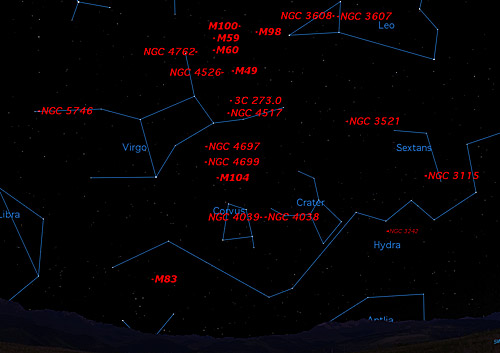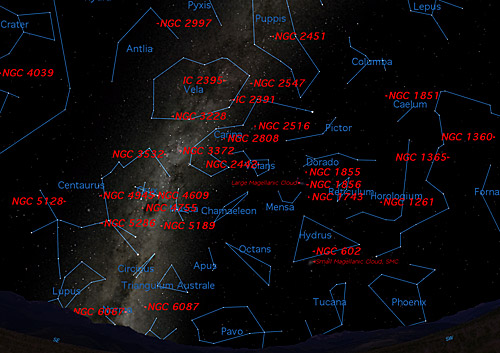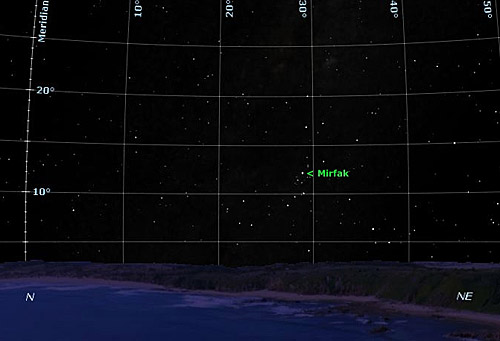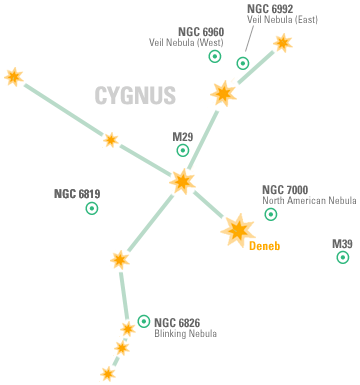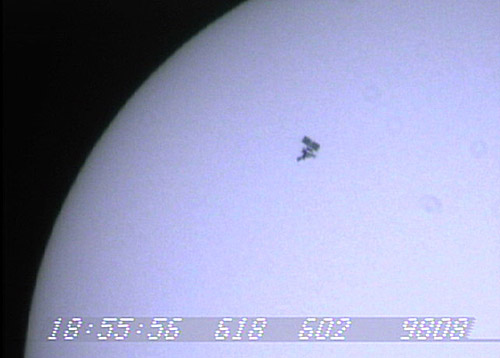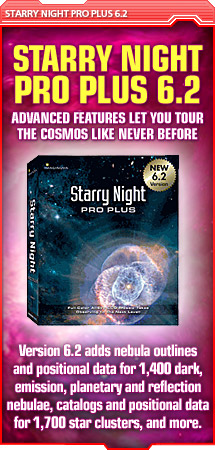 |
||||||||||||||||||||||||||||||||||||||||||||||||||||||||||||||||||||||||||||||||||||||||||||
|
If you have trouble viewing this newsletter, click here. Welcome again to our monthly newsletter with features on exciting celestial events, product reviews, tips & tricks, and a monthly sky calendar. We hope you enjoy it!
Recently I was awarded the Royal Astronomical Society of Canada’s Chant Medal. This medal is awarded every few years to an amateur astronomer resident in Canada on the basis of the value of the work they have carried out in astronomy. It’s the greatest honor a Canadian amateur astronomer can receive; previous recipients are a who’s who of amateur astronomy.
Geoff Gaherty (on left) receiving 2008 Chant Medal from Receiving this award has caused me to reflect on the greatest observing experiences I’ve had in my half century as an amateur astronomer, and I’ve put together a “top ten” list to share with you. Since I’m primarily a visual observer, I don’t have a lot of pretty pictures of my own to show, but through the magic of Starry Night® I can relive these memories and share them that way. I’ve put together a SkyCal file which you can place on your Starry Night® Preferences folder, which is called “Imaginova Canada”. The folder in Windows is hidden, so you will have to set Windows to show hidden files and folders. The Windows path is:
On the Mac, the path is:
Here, in chronological order, are my “top ten” observations. 1957-07-04: First view of Saturn through a telescope I got hooked on amateur astronomy because of a newspaper report of a bright comet, Arend-Roland. On 1957-05-01 I went out on my back porch in Montréal to look for this comet. I never found it, but I became interested in a bright object high in my southern sky. With the help of a book (no Starry Night® then—no desktop computers in fact) I identified this object as the planet Jupiter. Soon I was looking at telescope ads, and ordered a “Palomar Jr.” 4.25-inch reflector from Edmund Scientific. The telescope was delivered on July 4. I put it together and, as dusk fell, pointed it first at the Moon and then at Saturn. Saturn was simply unbelievable: “It really has rings!” I said to myself. 1960-06-07: First view of Jupiter’s Great Red Spot When I started observing Jupiter seriously in 1959, the Great Red Spot was invisible, as happens from time to time. On 1960-06-07 I was treated to my first good view of the Great Red Spot as it rolled around the limb of the planet into sight. The Great Red Spot is an atmospheric feature, a gigantic storm system, not connected to any fixed feature on Jupiter. As a result, it drifts back and forth in longitude over time. Starry Night® can be told the current longitude of the Great Red Spot through a file in the Sky Data folder called JupiterGRS.txt. I altered the time in this image to place the Red Spot where I saw it that night. If you don’t see the Great Red Spot in this image, it may be that you have an incorrect value for the longitude of the Great Red Spot: the current value is 126.0. Some early versions of Starry Night® 6 had a problem in their Jupiter display; make sure you have updated to the current version, 6.2.3.
Because Venus’ orbit is inclined slightly relative to Earth’s orbit, it almost always passes above or below the Sun when at inferior conjunction (between the Sun and Earth). With a telescope equipped with setting circles, it’s possible to observe Venus in daytime, even when it is quite close to the Sun. This observation was made just a day away from conjunction, with Venus about 7° away from the Sun. The crescent Venus was a thin sliver, and the backlighting by the Sun was refracted by Venus’ atmosphere completely around the disk, creating a “diamond ring” effect. Pencil sketch made with 8-inch reflector; north is at lower left.
For this eclipse, the RASC’s Montreal Centre organized three expeditions to the eclipse path, which cut across the St. Lawrence valley between Québec City and Montréal. I was with the southernmost party, inside a Hydro-Québec transformer substation near Plessisville, on the south shore. The eclipse occurred late in the day amidst passing clouds and had a very short period of totality, but it was truly memorable. I photographed totality with a 2-inch refractor. 1997-03-13: Comet Hale-Bopp over Manhattan Fast forward thirty-four years, spent getting educated, married, divorced, and remarried: little time for astronomy! I was spending March Break in New York City with my wife and son. Early one morning I looked out my hotel window on 57th Street and was amazed to see a bright comet hanging above the skyscrapers to my north. This was Comet Hale-Bopp, and once again a comet lured me into amateur astronomy. 2000-04-28/29: A Perfect Night Although I’ve observed more than 650 deep sky objects in my observing career, one night stands out in my memory.
Bad weather and road conditions caused the RASC Toronto Centre to postpone its 2000 Messier Marathon from March until April. I joined the Marathon at the Centre’s Carr Astronomical Observatory near Thornbury, but with no intention of observing Messiers. I was working on my RASC Finest NGC list at the time, and made its spring galaxies my targets instead. By the time the night was over, I had logged 24 new NGC objects, revisited 16 Messier galaxies, and observed my very first quasar, 3C273, at 3 billion light years the farthest object I’ve ever observed. 2003-09-16: RU Pegasi in outburst In 2002, answering a challenge made by Richard Huziak (2001 Chant Medal), I started seriously observing variable stars. I was particularly attracted to the so-called cataclysmic variables, such as U Geminorum and SS Cygni, which rise in brightness by several magnitudes at somewhat irregular intervals. In 2003 I added RU Pegasi to my observing list. The first time I observed it, on August 17, it was its normal quiescent 12.0 magnitude, matching a close-by comparison star. The next time I observed it, on September 16, it was in outburst at magnitude 10.6, completely changing the appearance of the star field. Like many faint variable stars, RU Pegasi isn’t plotted in Starry Night®. It is one of a pair of stars located 1/5 of the way between the two 8th magnitude stars TYC1145-992-1 and HIP109716. Normally these are both around 12th magnitude, so when RU goes into outburst, it is amazingly obvious. 2004-06-08: Transit of Venus As mentioned above, Venus usually passes above or below the Sun at inferior conjunction. But, twice every 122 years Venus actually passes in front of the Sun, the two transits occurring 8 years apart. The 2004 transit was only the seventh transit to occur since the invention of the telescope in 1609—truly a once (or maybe twice) in a lifetime observation! A large group of Toronto Centre members gathered on Cathedral Bluff in Scarborough, Ontario, before dawn to witness the Sun rising with Venus silhouetted against its disk. When the Sun first rose through the mists on the Lake Ontario horizon, we discovered that the disk of Venus was actually large enough to be easily seen with our naked eyes. 2006-03-29: Solar eclipse Many astronomers use solar eclipses as an excuse to travel to exotic locations, and I’ll admit this was part of the appeal of the Toronto Centre’s expedition to view the 2006 solar eclipse from the Libyan Sahara Desert, south of the Jalu oasis. Unlike my first eclipse, this one had a long period of totality and was viewed high overhead in a totally cloudless sky. The combination of a perfect eclipse in a truly wonderful location made this the most memorable observing event in my life. 2008-03-02/06: Four nights in Warrumbungle I’ve already described my four nights observing the southern sky’s splendors in detail in the April 2008 Times. However this plot of the objects observed in just four nights will show you just how rich these southern skies are.
I hope my sharing of my “top ten” observations will stimulate you to reflect on the memorable things you have seen in the sky. Some of these required travel to exotic locales, but most could be made anywhere. What are your top ten? Geoff Gaherty
Coordinate systems look complicated, but are really a very simple and very important application of angular geometry. Here's an easy one to start out with. Stand outside in your favorite observing location, and you can probably point to each of the cardinal directions: north, south, east and west. (If you can't, fire up Starry Night® and use the sky to figure it out!) The cardinal directions cut the sky into quarters. If you see an object somewhere between north and east, you can say it's in the northeast. If it isn't exactly between north and east, you could say that it's north-northeast (if it's a little closer to north than east) or east-northeast (if it's closer to east). Beyond this it gets a little silly. I'm not sure I've ever heard someone refer to a direction like north-north-northeast. We need a less cumbersome system to tell us which direction we're facing. Last month we divided a circle into 360 degrees. If you look at the horizon around you, you might notice something familiar—you can imagine the horizon as a circle, with you standing in the centre of it. Instead of pointing to four directions equally spaced around you, point to 360 of them! Use north as your starting point, and count upwards while turning in a clockwise direction. If north is 0º, east (being one-quarter of the way to 360º) is 90º, south is 180º, and west is 270º. Direction specified in degrees this way is called azimuth. If you're trying to mark the location of an object in the sky, you need more information than just a direction with respect to the horizon—you also need to know how high up it is. If you think of the sky as a spherical bowl turned upside down over you, any line from the horizon to the zenith (the point directly over your head) is a quarter of a circle, or 90º. Call the horizon 0º and the zenith 90º, and you can specify the altitude, or distance above the horizon, of any object in the sky.
In this picture of the constellation Perseus, the star Mirfak is a little to the left of the 30º azimuth line, so we could estimate its azimuth to be about 29º. Its altitude is roughly halfway between 10º and 15º, so we could call it 12.5º. (Note the “meridian” line—that line starts at north, i.e. the zero point of azimuth, goes through the zenith over your head, and down to the south, separating the eastern from the western sky.) There you have it—the altitude-azimuth (or alt-az) coordinate system, for giving the location of an object in the sky when seen from a given location at a given time. If you and I are standing outside at night and you tell me that you see something interesting at a certain azimuth and altitude, I'll know where to look. If I'm in some other part of the world, however, your altitude and azimuth coordinates won't be very meaningful to me. Remember that if you wait a few hours the Earth will rotate, so objects will be higher or lower in the sky or in a different direction; and someone on a different part of the Earth's surface won't be seeing the same sky that you are. How do you denote a more absolute and non-observer-centric location of an object in the sky? Tune in next month! Brenda Shaw
NGC 6960 & NGC 6992, the West and East Veil Nebulas, are part of the Cygnus loop, the remains of a supernova that exploded over 100,000 years ago. Two other sections, NGC 6995 and 6979 are close by. M29 is an unimpressive open cluster, notable only in that it was one of the original discoveries of Charles Messier. NGC 6819 is a small open cluster with about two dozen stars from 10th to 12th magnitude within a 5' circle. Its discovery in 1784 is attributed to Caroline Herschel. Deneb, which marks the tail of the swan, is one of the 20 brightest stars in the night sky. Just three degrees away lies NGC 7000, the North American Nebula, so-called because of its obvious shape. This is an active star forming region and quite large, though it's difficult to see without the aid of astrophotography. M39 is an open cluster, and is a nice binocular object with 30 or so stars spread over its seven lightyear diameter. It's also "pretty close" to Earth, at "just" 800 lightyears. Finally, NCG 6826, the Blinking Nebula, gets its name from an odd phenomenon: its central star appears to blink on and off when you look toward and away from it quickly. Sean O'Dwyer
Andrew Scheck took this photo showing a solar transit of the International Space Station (ISS) over the Sun. Andrew notes “Starry Night® Pro Plus 6 predicted time to within 2 seconds and path almost exactly.”
PRIZES AND RULES: We would like to invite all Starry Night® users to send their quality astronomy photographs to be considered for use in our monthly newsletter.
Please read the following guidelines and see the submission e-mail address below.
|
SEPT 2008
|
|||||||||||||||||||||||||||||||||||||||||||||||||||||||||||||||||||||||||||||||||||||||||||
 |
||||||||||||||||||||||||||||||||||||||||||||||||||||||||||||||||||||||||||||||||||||||||||||
|
|
||||||||||||||||||||||||||||||||||||||||||||||||||||||||||||||||||||||||||||||||||||||||||||
You have received this e-mail as a trial user of Starry Night® Digital Download
or as a registrant at starrynight.com. To unsubscribe, click here.
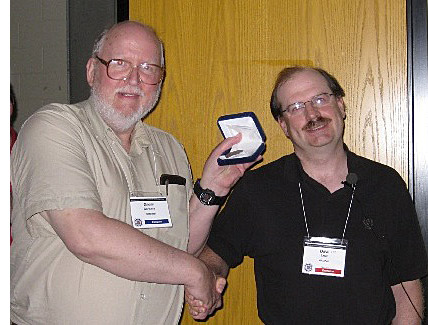
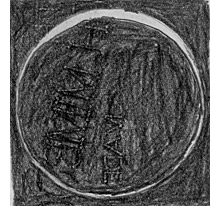 1961-04-09: Venus at inferior conjunction
1961-04-09: Venus at inferior conjunction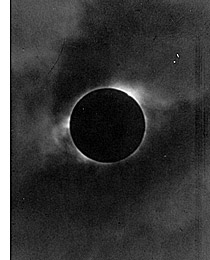 1963-07-20: Solar eclipse
1963-07-20: Solar eclipse